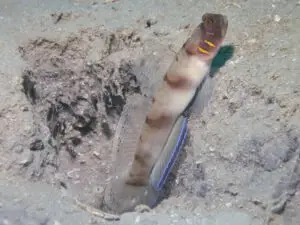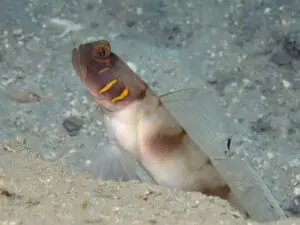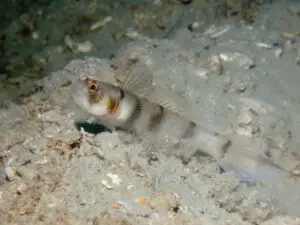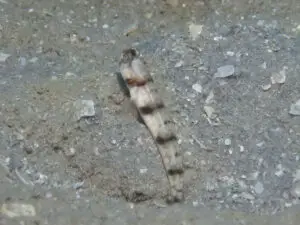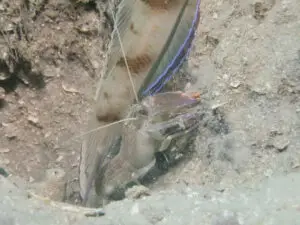Beautiful-cheek Shrimpgoby
Amblyeleotris callopareia
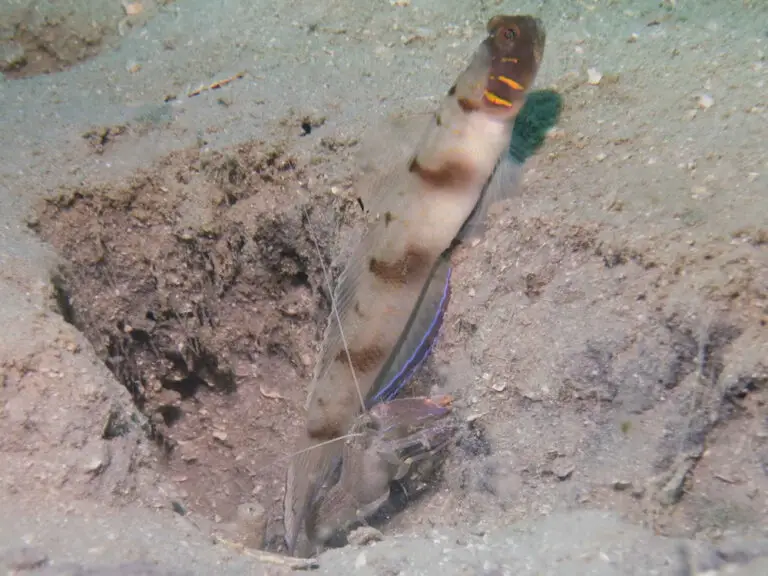
Broadbanded Shrimpgoby
Amblyeleotris callopareia
Polunin and Lubbock, 1979
Natural History
Habitat
Depth range is reported to be 25 to 100 metres but our sightings have been in the range 10 to 17 metres. It lives on fine silty sand mixed with a small amount of shell debris in areas well away from the reef edge. Visibility in these areas is usually reduced by the silty substrate.
In our experience, it is found on the coastal islands of Queensland but not on the outer Great Barrier Reef.
The type locality is Lizard Island where the habitat was described as coarse sand. We have not yet seen it there.
Natural History
Habitat
Variable depth and habitat 5 to 35 metres. From the outer reef front to the sheltered fringing reef.
May be found on flat rubble, sand between scattered small coral rock outcrops on patch reefs, and also on black sand slopes.
Though this is the usual habitat we have also seen them at 30 m on sand with small coral rock fragments in parallel rows on the seaward side of Ribbon Reef #3. The Yellow Pyjama Shrimp is the partner in this habitat.
Behaviour
This goby is usually to be found perched on the rim of its vertical burrow scanning the local area. It is usually solitary and not particularly wary, allowing a cautious approach. We have not seen it foraging away from the burrow.
Distribution
Published distribution: Recorded, without identification, from Raja Ampat Islands of eastern Indonesia. (Allen and Eardmann 2012)
Type specimen described from Lizard Island.
Our records: Australia:
Hervey Bay in southern Queensland,
Blunt Bay, North East Percy Island in central Queensland,
Fitzroy Island and the Low Isles off the northern Queensland coast.
Associated Shrimp species
Associated Shrimps (one shrimp)
Grey Snapping Shrimp, Alpheus species 5
This is an unusual shrimp and the only one so far associated with the Beautiful-cheek shrimpgoby. Interestingly Allen’s image from Raja Ampat shows this goby with the same shrimp.


